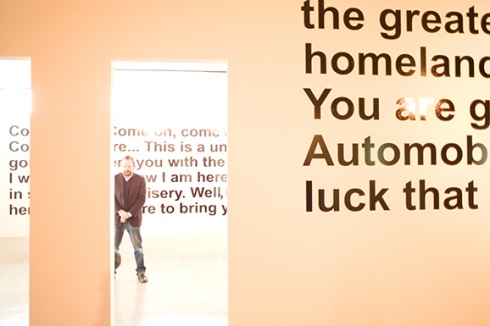Transmedia journalism is designing a project to unfold across multiple media in an expansive rather than repetitive way. In the movie and music industries much of a transmedia story may be told in a film or on an album. But a series of interconnected stories or pieces of context may be told through games, comics, novels, Web media, fan fiction and even amusement parks. Those other pieces expand rather than repeat the story.
A Story World
A transmedia project explores a space that contains multiple characters who can each tell multiple stories. It’s a space that you can draw a border around, like Batman’s Gotham City or that galaxy far far away. In journalism this could be a physical space like a neighborhood, a social space like a community, or an issue space like immigration or climate change. It could also be an ongoing beat topic, like state government.
Media Forms
The interconnected stories from that world take advantage of the different forms media can take. These include text, audio, video, game and interactive forms, graphic nonfiction, physical artifacts, lectures and many others. These ‘languages’ tell stories in unique ways. Stories from our world should use the media form that best fits the way an individual story in our world should be told. Nearly any media form can tell a good journalistic story if we use our usual forethought and ethical rigor.
Media Channels
Those forms can all be distributed in multiple ways. Text, for example, can be published by newspapers, magazines, the Web, or even sidewalk chalk and sky writing. These are media channels, or connection points with an audience. As we take advantage of the media forms above, we want to take advantage of the many ways we can reach varying audiences. For example, regular newspaper readers differ from gamers in where and how they can be found. Here we decide who it is important to reach, and place media to find those audiences. Journalism options include various print media, television, radio, museums, lectures, game consoles, public projections, billboards or any other means for the stories to be seen. Nearly any media channel could be used to tell a journalistic story. Websites and mobile apps are powerful channels as they can display many of the forms listed above. But they are each only single media channels with particular audiences. They alone don’t answer all our needs.
Partnerships
Few organizations exist that have the skills to produce many media forms and have access to many media channels. This requires teamwork between skilled producers of different media forms as well as cooperation between the owners of various media channels. Each partner would gain from the work or distribution of the others.
What it Creates
By telling interconnected stories we can embrace the nuance and complexity that exists in any story world. Through multiple forms we can engage the different parts of our story-loving brains. By distributing them across varying channels we can target the audiences that really matter.


November 6th, 2012 at 3:32 pm
Kevin, that is one of the best descriptions of transmedia storytelling that I’ve heard yet. Thank you!
November 7th, 2012 at 2:10 am
[…] Kevin Moloney: "Transmedia journalism is designing a project to unfold across multiple media in an expansive rather than repetitive way" … […]
November 7th, 2012 at 2:51 am
[…] Kevin Moloney: "Transmedia journalism is designing a project to unfold across multiple media in an expansive rather than repetitive way" … […]
November 7th, 2012 at 6:36 am
[…] See on transmediajournalism.org […]
November 7th, 2012 at 8:48 am
[…] Transmedia journalism is designing a project to unfold across multiple media in an expansive rather than repetitive way. In the movie and music industries much of a transmedia story may be told in … […]
November 7th, 2012 at 12:25 pm
[…] Kevin Moloney: "Transmedia journalism is designing a project to unfold across multiple media in an expansive rather than repetitive way" … […]
November 7th, 2012 at 1:58 pm
[…] Kevin Moloney: "Transmedia journalism is designing a project to unfold across multiple media in an expansive rather than repetitive way" … […]
November 7th, 2012 at 3:00 pm
[…] the rest of the article at—Transmedia Journalism Photo taken from original […]
May 15th, 2013 at 1:17 am
[…] recognition and Kevin Moloney sums up the essence and goal of transmedia journalism in his blog dedicated to the […]
April 21st, 2014 at 3:42 pm
[…] three terms can be divided on how they use media form and media channel. Media form is a language a story uses, and it can include text, photographs, illustrations, motion […]
April 19th, 2016 at 8:59 pm
[…] transmídia, Kevin Moloney, resume a essência e o objetivo do jornalismo transmídia em seu blog dedicado à […]
November 2nd, 2016 at 7:48 pm
Great summary! Very fruitful. We are working on the same topic currently. Check out our blog http://www.storyfloat.de and http://www.transmediathinking.com maybe we can connect and share some thoughts?
November 3rd, 2016 at 5:50 am
Absolutely. PM me on Twitter.